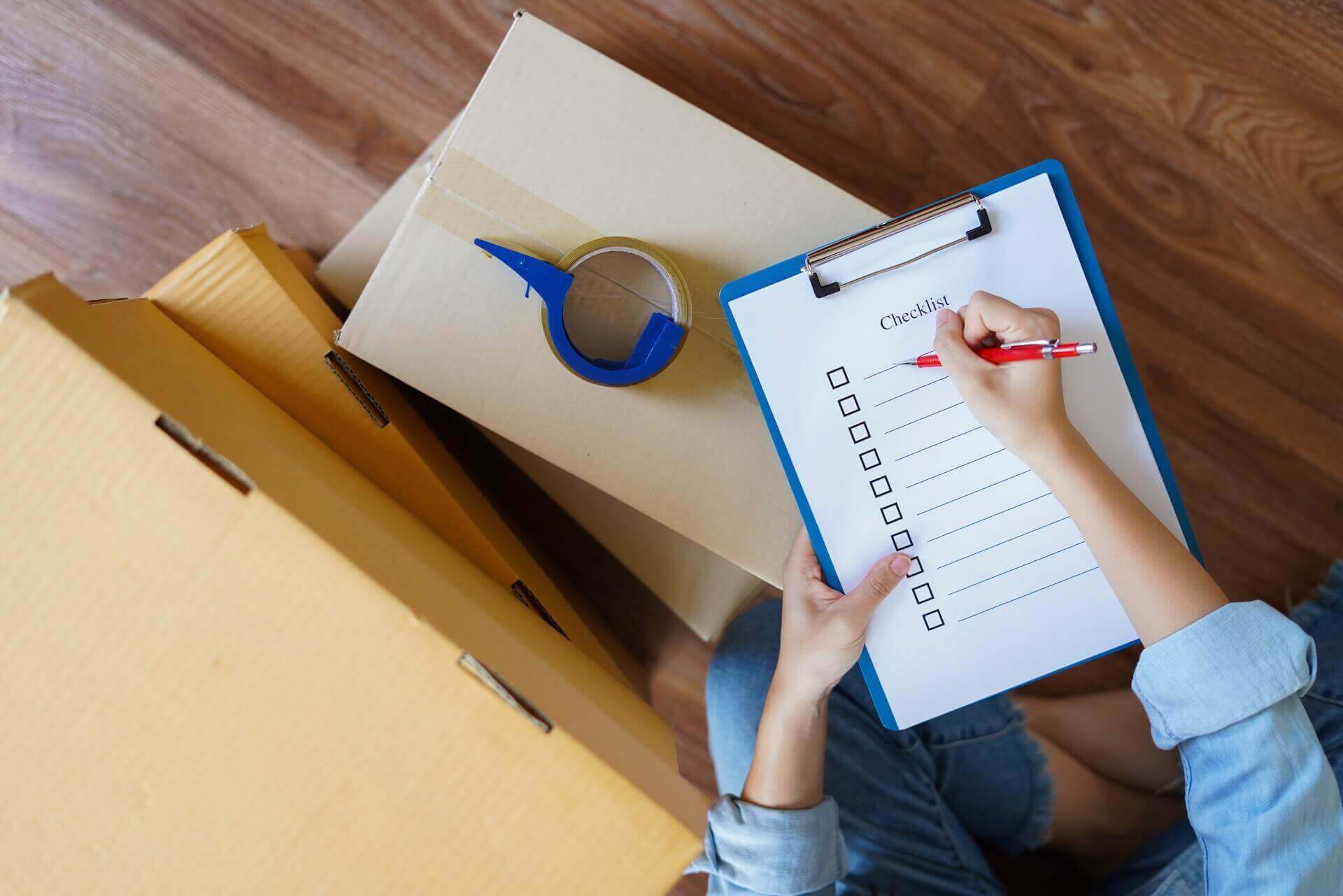Drawers full of utensils, shelves packed with dishes, and plenty of clanging pots – mastering how to pack kitchen items for moving can be like following a complex recipe to perfection. From your cherished coffee mug collection to the hefty cast-iron skillet that’s seen countless dinners, every piece needs special care to make the journey safely. Let’s get packing and turn this challenge into a piece of cake.
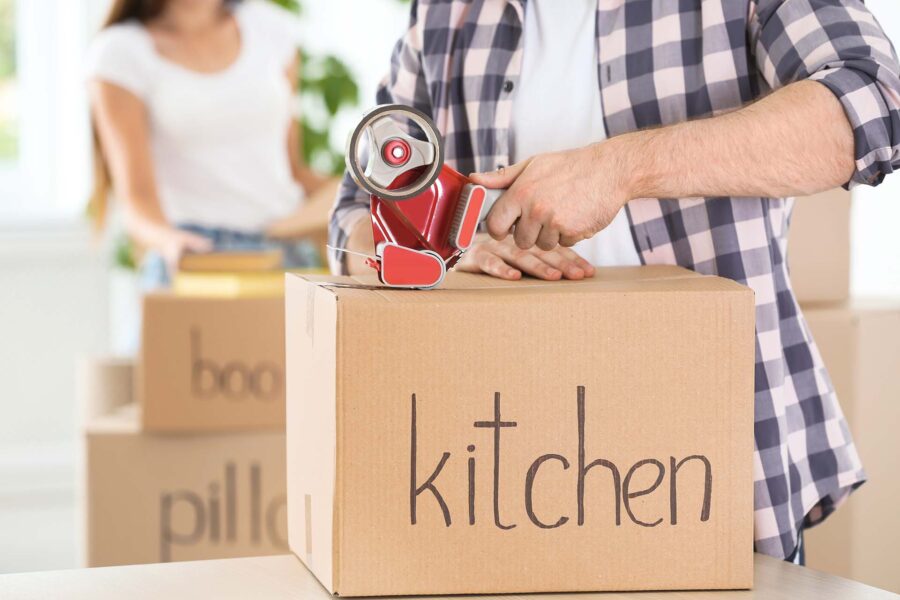
How to Pack Kitchen Items for Moving Long-Distance
Fragile items like glasses and plates should be wrapped individually, while silverware should be bundled and wrapped. Larger appliances need thorough cleaning and secure boxes, ideally original ones. Label every box clearly, highlighting fragile items. Professional movers will provide the expertise and resources needed for a smooth transition, ensuring every piece of your culinary collection arrives safely.
Decluttering Your Kitchen Beforehand Is a Great Way to Lighten the Load
Most kitchens that grace American homes are either medium or large-sized spaces.
Therefore, they offer ample room to house a myriad of culinary gadgets, utensils, and cherished cookware.
All of this stuff can take up a good chunk of your household inventory, and this is not really a problem until it’s time to move.
What should you take with you? What can you live without? This is where the crucial step of decluttering enters the relocation equation. By carefully sorting through your items, you’ll be able to both lighten the physical load and simplify the process of packing the moving truck. You can donate the stuff to the Salvation Army – they accept plates, bowls, bakeware, pans, pots, and small appliances. Decluttering allows you to focus on the relocation essentials – those items that blend sentimental value with daily utility.
Follow the Recipe – Here Are the Essential Supplies for Packing Kitchenware and Appliances
With your culinary belongings pared down to the essentials, the next step is crystal clear – assembling the right packing materials. Just as you wouldn’t bake a cake without all the ingredients on hand, you shouldn’t start tackling this part of the house without the necessary supplies. Here are the must-have packing materials for the safe transport of kitchen items:
- Sturdy boxes of various sizes,
- Bubble wrap,
- Packing paper,
- Duct tape,
- Stretch plastic wrap,
- Furniture pads or blankets,
- Marker pens.
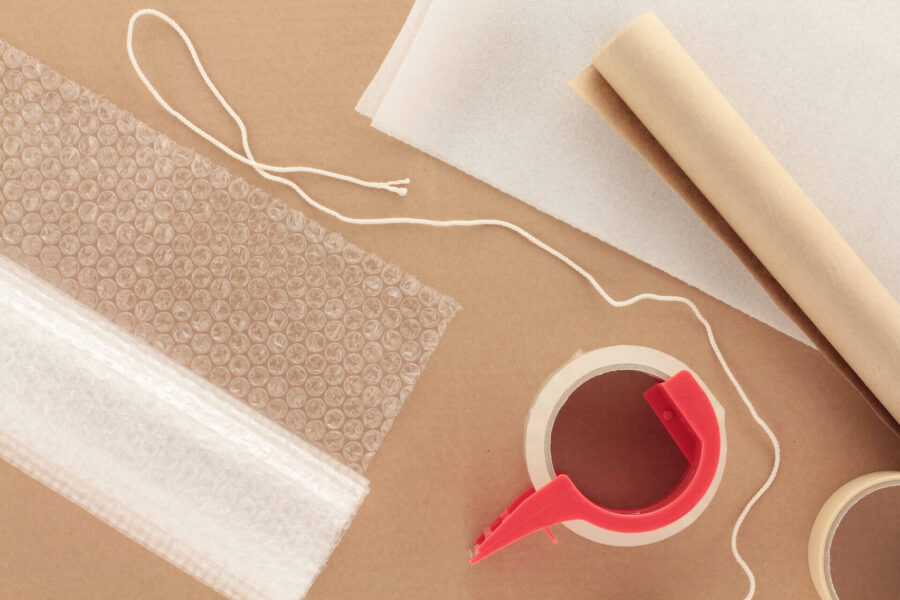
Cleaning Each Item Is Non-Negotiable Before You Start Boxing Everything Up
Let’s face it – amidst the whirlwind of moving day preparations, cleaning might be the last thing on your mind. Yet, scrubbing down every plate, pot, and appliance before they hit the box is a step you can’t afford to skip. This move-out cleaning will ensure all of your stuff is free from the last supper’s grease and crumbs. After all, the last thing you want is to be greeted with unwanted grime or funky smells once you reach your new home.
Professional Cross-Country Movers Won’t Handle Perishable Food – Make Sure You Get Rid of It
Getting a professional long-distance moving company such as the California-Seattle Express to help you with the task at hand can significantly ease your relocation stress. But if you’re hiring movers, make sure you’re well-informed about the items they won’t move.
Unlike hazardous materials, which are a clear no-go for safety reasons, food doesn’t pose a danger – it’s just a potential mess waiting to happen. To avoid the heartache of opening a box of spoiled goods or, worse, contaminating your culinary gadgets, make sure to clear out your fridge and freezer.

Efficient Kitchen Packing Strategies for Appliances, Both Big and Small
The refrigerator and freezer require some extra attention, especially if you’re bringing them along for the ride. Unplug them well in advance of your moving day to say goodbye to any frosty build-up and prevent unwelcome, moldy guests from joining your move. After they’ve shed their icy layers, dive in with a good scrub and prop their doors open for a thorough air-out session.
When it comes to packing, these larger appliances are best left to professional long-distance moving services, but the smaller gadgets can be your domain. Ideally, each appliance should snuggle up into its original packaging, but since that’s often wishful thinking, you’ll need to find the right-sized boxes. To prevent any jostling or damage while moving kitchen appliances, fill the remaining space with soft padding, packing paper, or bubble wrap.
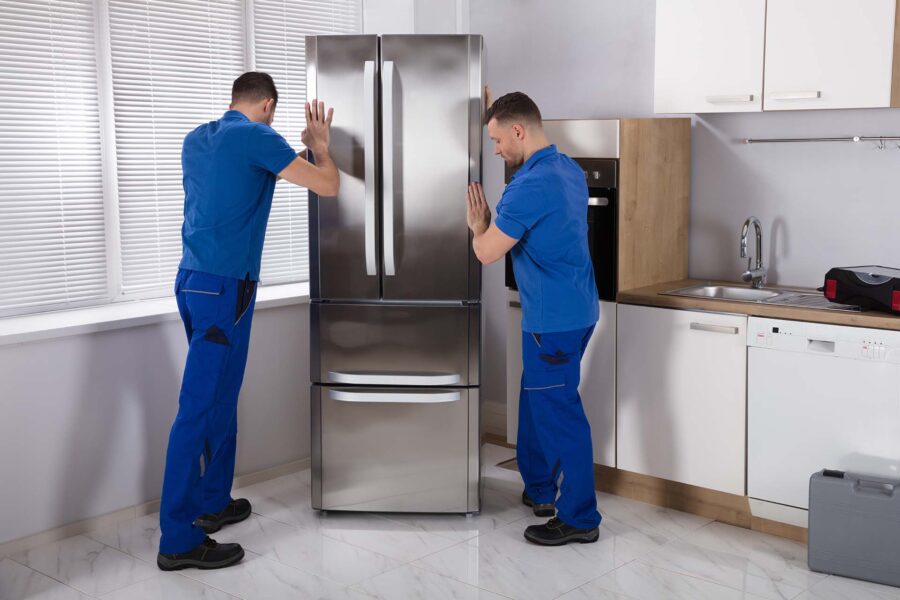
How to Pack Kitchen Stuff for Moving – Let’s Break This Task Into Smaller Categories
Diving into the whole ordeal can feel like opening a Pandora’s box of utensils, appliances, and an assortment of dishware. Each item, from the sturdiest pot to the most delicate glass, demands a unique approach to ensure it survives the journey unscathed.
To navigate this culinary labyrinth successfully, categorizing your belongings is the key. Let’s dissect these categories and explore some kitchen packing tips for each one:
Pots and Pans
Pots and pans, with their sturdy build, might seem like the least of your worries. However, to avoid scratches and preserve their finish, careful handling is essential. Start by nesting smaller pots inside larger ones, using a layer of packing paper or a dish towel between each to prevent scuffing.
For pans with non-stick surfaces, ensure a soft barrier lies between them to keep that crucial coating intact. Handles can be wrapped with bubble wrap to avoid bending or breaking. When choosing a box, select one that can bear their weight without giving way. Distributing the weight evenly among boxes can also prevent any box from becoming too heavy to lift safely.
Plates and Bowls
When it comes to ceramic or glass plates and bowls, wrap each plate individually in bubble wrap or protective paper, securing the wrapping with tape. Compared to that, figuring out how to pack plastic kitchen items for moving is much easier, as they usually handle the road better, but they still require some protective material.
Pack plates vertically in the box, like records, as this positioning reduces the risk of breakage. Bowls can be nestled within each other with a layer of cushioning in between and placed upside down in the box. Ensuring there’s no empty space in the box is crucial – fill gaps with crumpled paper or towels to prevent movement during transport.
Glasses and Other Fragile Stuff
Glasses, mugs, and other fragile items require the most attention. Begin by stuffing the inside of each glass or mug with packaging paper to maintain its shape and add an internal buffer against shocks.
Then, wrap each piece individually, tucking the edges of the paper or bubble wrap into the hollow part to secure it. Specialized dividers or cell boxes can provide additional protection, keeping each item snug and preventing collisions. Always mark these boxes as “fragile” and indicate which side should face up to alert your long-distance movers in California and Seattle to handle them with extra care.
What About the Silverware and Utensils? How Do You Protect These Culinary Essentials?
Last but not least, we’ve got the small yet mighty heroes of your culinary escapades left – the silverware and utensils. From your everyday spoons to those special occasion serving utensils, each piece deserves careful attention to arrive at your new apartment ready for action. Here’s how to ensure everything is packed safely and efficiently:
- Begin by sorting your silverware and utensils into categories such as everyday use, special occasions, and tools with sharp edges,
- For everyday silverware, wrap bundles of similar items in packaging paper or a small towel and secure the bundle with a rubber band or tape,
- For silver items or those with sentimental value, individually wrap each piece in cloth or acid-free paper before bundling to prevent tarnishing,
- Use plastic wrap to secure the bundles further and keep them compact,
- For sharp knives and utensils, protect the edges with cardboard and secure them with tape, then wrap the entire utensil in bubble wrap for added protection,
- Consider using a utensil organizer to pack your silverware and utensils,
- Choose a small to medium-sized box for these items to avoid overpacking,
- Fill any empty spaces in the box with crumpled paper or bubble wrap to prevent movement and noise during transport.
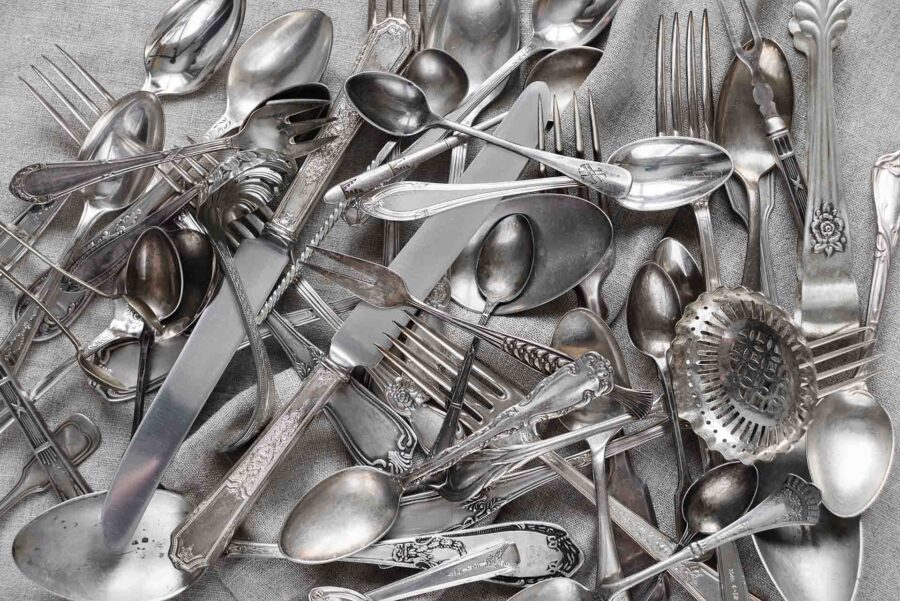
From the Smallest Piece to the Largest Appliance, Make Sure You Label Everything
The importance of meticulously labeling everything from the tiniest teaspoon to the largest appliance cannot be overstated. It’s a simple step on your to-do list with powerful implications, making both the loading and unpacking process efficient. This level of organization can allow you to settle into your new space with a semblance of sanity intact.
Use a permanent marker to write the contents of each box by using a clear, consistent system. For boxes containing fragile items, a bold “FRAGILE” can make all the difference in how it’s handled. Additionally, consider color-coding your relocation labels for even easier identification.
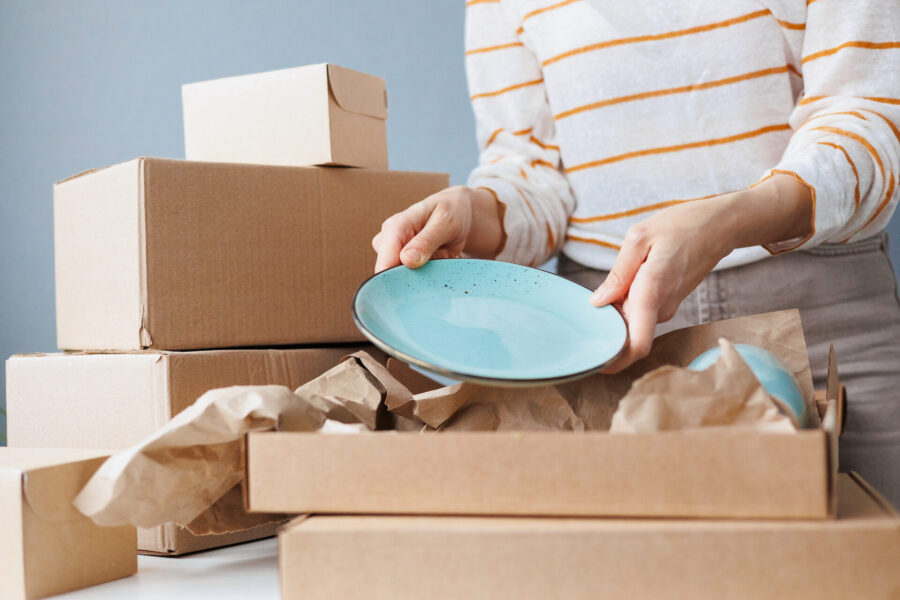
Is It Necessary to Hire a Professional Cross-Country Moving Company for Your Relocation Journey?
Technically, you can take on the monumental task of packing up your entire life and moving it across the country by yourself. You’ll manage, but at what cost to your time, energy, and stress levels? Professional packing services bring more to the table than just extra hands – they come equipped with the right supplies and the kind of expertise that only comes with experience.
Moreover, a professional relocation company does not stop at merely transporting boxes from point A to point B. They offer comprehensive solutions for every part of your journey, including your prized four-wheeler. Car shipping services can also be a part of the package, removing the logistical nightmare of how to get your vehicle across the country without adding miles or wear and tear.
Residential Relocation Service
Feeling rushed about your long distance move? We can help you organize and budget so you have everything in place.
Packing Services
Our professional packers have methods and techniques to ensure all your items are intact during and after the move.
Car Shipping Services
We can ship your vehicles using the best freight options available. Your car will be moved safely and securely and arrive as planned.
Movers From Seattle to California Can Help You Wrap up All of Your Culinary Concerns
It’s clear that each spoon, plate, and appliance plays a crucial role in the symphony of your home. Therefore, ensuring these items are packed with care is all about preserving the flavors, memories, and moments that make your house a home. With the right techniques and a bit of preparation, you can ensure that your culinary world is transported safely and efficiently, ready to bring warmth and joy to your new space.
If you’re in need of assistance any step of the way, remember that the experts at California-Seattle Express can lend a helping hand. Reach out to us today for a stress-free move that lets you focus on the excitement of your new adventure. Let’s make it as memorable and worry-free as the meals you’ll prepare once you get to your destination.


